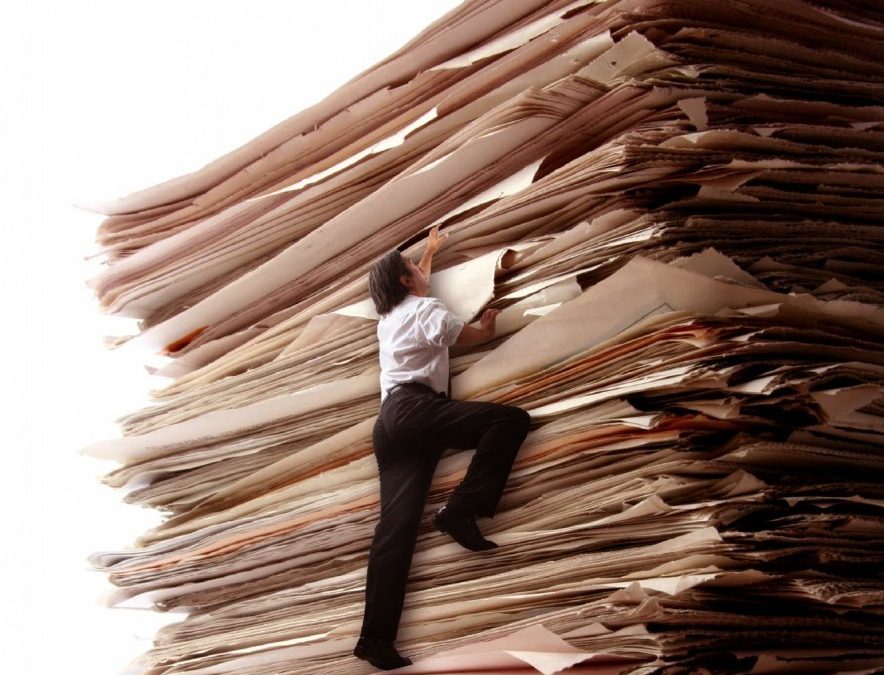Welcome, Brave New “Paperless” World
Remember the promise of the paperless office? Gone would be our filing cabinets, printers, shredders, and stacks of bulging file folders. We’d all live happily every after in a fresh, green world where all manner of information was digitized, and forests once again covered the planet.
News flash. It didn’t happen. In fact, paper use in offices expanded for three decades after the first prediction of its demise in 1975. Even last year, office workers in North America printed out or photocopied over one trillion pieces of paper. Apparently if you stacked it all up, you’d get halfway to the moon.
There are signs, however, that progress finally is being made. The Wall Street Journal reported in September, “For the first time in history, there is a steady decline of about 1% to 2% a year in office use of paper. Add in the dip in use during the most recent recession, and as of 2016, we are already 10% below the peak of the number of pages produced by office printing and copying in 2007.”
Hey, pat yourself on the back! Looks like we’re back in the green.
Change your business processes, change the way you use paper
Those who study the printing habits of humans (and yes, Xerox actually employs a team for this purpose), the option “not to print” isn’t responsible for the change. The paperless office is becoming a reality because of changes in business processes.
Traditionally, paper has been a critical piece of business process, particularly in the back office. After all, it is how we record information, manage it, store it, share it, and send it to remote locations—don’t ask me to give up on paper until I know for certain that it’s possible to securely and easily digitize written documents! Most small and medium sized businesses want to be greener but they’ve been slow to get rid of paper simply because its been difficult to fully digitize their workflows.
Doing your part
With today’s technology, however, including small, inexpensive hand scanning devices, going paperless doesn’t have to be a pipe dream any longer. It is possible to make a meaningful shift to a more paperless workplace.
So how do you let go of those precious sheets of paper? Set your sights on a change in a process rather than worrying too much about the occasional report that gets printed. Here are some suggestions:
- Paperless forms (what’s that name, again?) Not only do they save printing, paperless forms save time because you’ll no longer be dealing with information that’s often incomplete, inaccurate, or totally illegible.
- Document management software(SharePoint) and online collaboration tools (Teambox, Dropbox, and Google Docs): These all increase productivity and discourage printing and filing of documents.
- Web-based billing and payment systems such as Freshbooks (no more, “the cheque got lost in the mail”)
- Electronic ordering that reduces paper flow with vendors, customers and banks.
- Digital archive for tax documents, including statements, receipts, etc. (Your tax accounting will also thank you).
- Online task management softwarethat organizes tasks centrally.
Back office processes are near and dear to our hearts at Black Tulip—we love making offices more efficient, and uncovering staff surrounded by large, imposing file cabinets and buried in piles of paper work.
So we’re ready when you are with processes like electronic billing, or the sharing of financial reports through the cloud instead of binders full of spreadsheets. It goes without saying (but we’ll say it anyway), as the back office experts—Black Tulip can get you set up in 2017 to be as paperless as you want to be.









